It’s Tuesday night in Lakeview East and the Kit Kat Lounge and Supper Club is the place to be. While most of the bars along Halsted don’t get going until later in the evening, by 8:30 p.m. this intimate South Beach-style dinner club is already packed.
And no wonder. Instead of artwork, black and white films like Mommy Dearest are projected against the walls; the décor – white sofas, chrome legged tables, round wall mirrors – is meant to evoke “Hollywood glamour;” and the drink menu features 25 “martinis to go.” The bright green “Kit Kat” is reportedly the most popular, but Tuesday feels more like a Peggy Lee martini night.
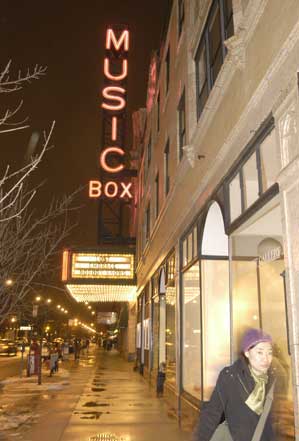 After a few sips, the lights flicker, and the entertainment begins. The audience laughs and claps as Natalie Cole look-a-like Tracy lip-syncs and dances her way through “Everlasting Love.” Dressed in orange resort wear – as seen through a drag queen’s eyes – Tracy flings her skirt and nearly everything else at the patrons.
After a few sips, the lights flicker, and the entertainment begins. The audience laughs and claps as Natalie Cole look-a-like Tracy lip-syncs and dances her way through “Everlasting Love.” Dressed in orange resort wear – as seen through a drag queen’s eyes – Tracy flings her skirt and nearly everything else at the patrons.
The scene is decidedly quieter at Roscoe’s, where Mark, a 40-ish man from the southwest suburbs, heads several nights a month for the friendly, neighborhood atmosphere and the pitcher specials. “It’s like Cheers here,” Mark says. Of course, Cheers never hosted a weekly amateur drag night, nor did it have its own official queen. Roscoe’s crowns a new “Miss Roscoe” annually in what has become a sacred event for some.
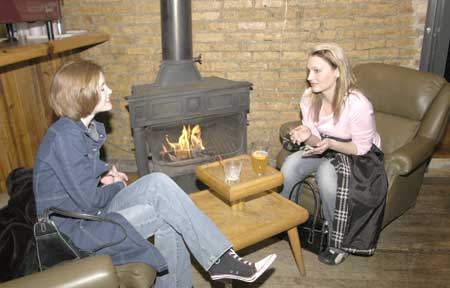 Welcome to North Halsted Street, home to one of the nation’s most prominent gay communities and the center of action in Lakeview East, the neighborhood bounded by Diversey, Irving, the lake and Halsted. Seven years ago, “Boys Town,” as it’s affectionately known, was officially recognized when the City of Chicago gave Halsted Street a makeover, complete with planters, signs, lights and some now infamous rainbow-ringed pylons.
Welcome to North Halsted Street, home to one of the nation’s most prominent gay communities and the center of action in Lakeview East, the neighborhood bounded by Diversey, Irving, the lake and Halsted. Seven years ago, “Boys Town,” as it’s affectionately known, was officially recognized when the City of Chicago gave Halsted Street a makeover, complete with planters, signs, lights and some now infamous rainbow-ringed pylons.
A popular photo backdrop for out-of-towners, the pylons represent a new kind of Halsted Street – one that is far less gritty and a whole lot more glamorous than the old one.
More glitz, less grit
The bar once known as “Manhole,” for example, now goes by the name “Hydrate.” Sidetrack offers valet parking (for all those people driving in from the suburbs), and many of the bars boast regular celebrity sightings. According to Sidetrack bartender J.P. (Juan Perez) brushes with fame in the chic bar include Will & Grace star Sean Hayes, Oprah interior designer Nate Berkus, singer Cyndi Lauper, comedienne Margaret Cho and actresses Bea Arthur and Salma Hayek.
“We recently had a couple of the guys from the (HBO) show Queer As Folk here too,” J.P. says. “I don’t know their names, but I recognized them.”
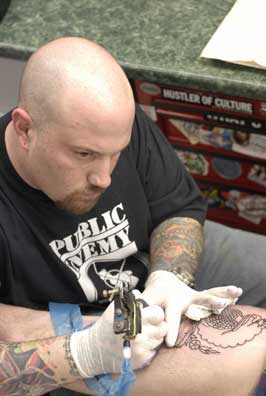 The fact that Lakeview East’s Halsted Street is now one of the top gay tourist destinations in the country is perhaps a little annoying to some in the gay community, who find the whole thing a little too “Disney-esque.” But it is clearly a source of pride for many others. After all, gay urban pioneers were the ones who reclaimed the neighborhood from urban decline in the ’70s and transformed it.
The fact that Lakeview East’s Halsted Street is now one of the top gay tourist destinations in the country is perhaps a little annoying to some in the gay community, who find the whole thing a little too “Disney-esque.” But it is clearly a source of pride for many others. After all, gay urban pioneers were the ones who reclaimed the neighborhood from urban decline in the ’70s and transformed it.
“It was the gay and lesbian community who opened the first businesses here,” Lakeview East resident and local activist Charlotte Newfeld has said. “There’s just no doubt about who contributed to this neighborhood and made it what it is today.”
Eighteen years ago, when bar owner Jim Ludwig purchased the property that would become Roscoe’s, the vacant building was serving as gang headquarters, with a Puerto Rican gang in front and a Mexican gang in back. Not exactly a comforting thought for the man who planned to turn it into a gay bar.
“I had to take on the persona of a hard-ass guy, with a full beard, cowboy hat and boots,” recalls Ludwig. The gang members eventually left, but it was years before the neighborhood lost its gritty edge.
In 1989, when Coldwell Banker real estate agent Chris Pagano purchased his Lakeview East townhome there were still hookers walking the streets. “Between 2 and 3 a.m.,” Pagano recalls, “you’d come back from the bars and the prostitutes would be lined up on Broadway north of Diversey up to Belmont.”
From renters to buyers
Today, Lakeview East has not only cleaned up its act, it’s is a pricey neighborhood where, according to Pagano, the average cost of a two-bedroom condo is $365,000, and single family homes start around $800,000. Considering that single- family homes in Lakeview cost less than $20,000 in the early ’70s, the changes have been staggering.
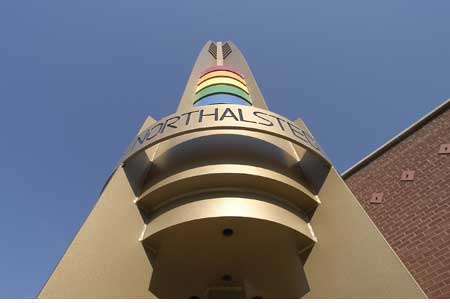 For many in the gay community, though, those changes haven’t been entirely positive. While a portion of the community – at least those who became homeowners at the right time – have stayed in the neighborhood, rising real estate prices have been a somewhat bitter pill for others to swallow.
For many in the gay community, though, those changes haven’t been entirely positive. While a portion of the community – at least those who became homeowners at the right time – have stayed in the neighborhood, rising real estate prices have been a somewhat bitter pill for others to swallow.
“Lakeview East at one time was a place where young single gay men from places like Iowa could move to,” says Chicago Free Press staff reporter Gary Barlow. “They moved into a gay community that helped foster their sense of identity. They found a home here.”
Large-scale condo conversions like the 55-story Park Place Tower, 655 W. Irving, have shrunk the supply of rental properties in the neighborhood, and many former renters have migrated north to neighborhoods like Uptown, Barlow says.
According to Park Place sales director Tami Scully, about 15 percent of the buyers at Park Place have been former renters.
“There’s been a lot of condo conversion in Lakeview,” agrees 44th ward Alderman and Ann Sather restaurant owner Tom Tunney. “But the rental market has been pretty flat over the last few years, because people paying $1,200 a month in rent have maybe decided, why should I spend the same amount in rent as I would in a mortgage?”
Many of those first-time home buyers – gay and straight – have decided they can get more for their money if they head north.” The cost of real estate in Lakeview East is ridiculous,” says 27 year-old J.P. “If I were to buy, I would look in Ravenswood or Roger’s Park.”
Lakeview East might not be at the top of the list for most first-time homebuyers, but they don’t necessarily have to rule it out, Pagano says. “You can still get a two-bedroom unit in a ’60s or ’70s building with partial lake views for $157,000,” Pagano says. “But it will be a fixer-upper with maybe 760 square feet.”
At press time, RE/MAX Alliance Downtown was selling large refurbished condos at 525 W. Hawthorne, a 240-unit highrise steps from the lake. One-bedrooms are priced from the $220s, and two-bedroom units from the $290s for units with hardwood floors, custom kitchens, Whirlpool appliances, granite countertops, new baths and lake and city views.
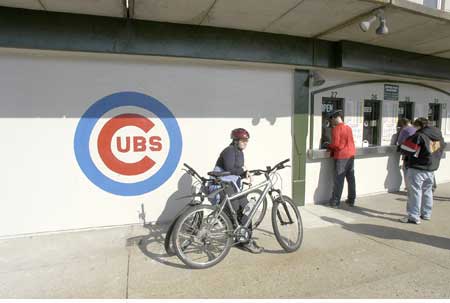 Besides highrises constructed in the ’60s and ’70s, the housing stock in Lakeview East includes vintage and modern highrises on the lake, mid-rise and courtyard condo buildings and two-flats and three flats. Among the most sought-after buildings in the neighborhood are new construction brick and limestone six-unit walk-ups. According to Pagano, units in those buildings are priced in the $450,000 to $550,000 range.
Besides highrises constructed in the ’60s and ’70s, the housing stock in Lakeview East includes vintage and modern highrises on the lake, mid-rise and courtyard condo buildings and two-flats and three flats. Among the most sought-after buildings in the neighborhood are new construction brick and limestone six-unit walk-ups. According to Pagano, units in those buildings are priced in the $450,000 to $550,000 range.
Units on the south side of 2800 Lakeshore Drive are also in high demand, says Prudential Preferred Properties real estate agent James Weinberg. “Those condos have probably the most spectacular views in the entire city,” Weinberg says. “You have the park, the lake and the city.”
These days there isn’t a whole lot of new construction in Lakeview East, but the sale of the Marigold Bowl, on Grace just west of Broadway, is resulting in a batch of new condos for the neighborhood. The 17-story Park View East will have 140 units. At press time, the development was nearly sold out, with remaining condos priced from the $270s.
While such projects are good news for buyers looking for hard-to-find new construction in Lakeview, they can be bad news for some Lakeview East renters worried about rising prices.
New residents
Pagano says he’s noticed a change in the profile of new Lakeview residents. Instead of young Midwestern gay men coming to rent apartments, new residents are more likely to be young professional buyers who have been out-priced in Lincoln Park.
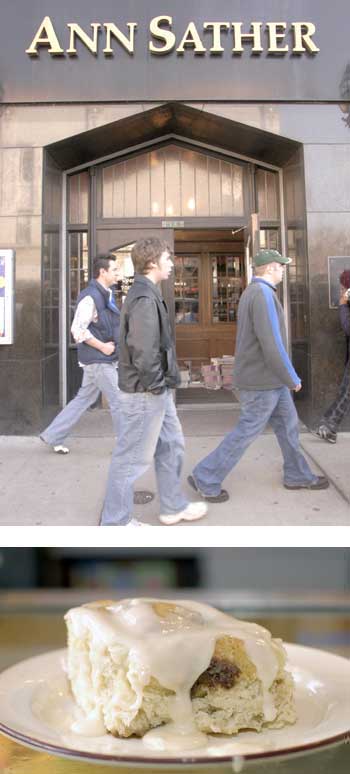 “Your typical Lincoln Park purchaser is now considering Lakeview,” says Pagano. “I really think the southern border between Lincoln Park and Lakeview is blurring.”
“Your typical Lincoln Park purchaser is now considering Lakeview,” says Pagano. “I really think the southern border between Lincoln Park and Lakeview is blurring.”
J.P. confirms the trend. “I see more and more single women in the neighborhood,” he says. “But I like the change. I think it’s more well-balanced.”
Yet despite demographic changes in Lakeview East, many of its gay-owned businesses continue to thrive. In addition to the bar strip along Halsted, a host of mostly gay-owned home décor stores have emerged along Broadway, including Apartment 105, Addendum, Cloudy and Equinox. Pass the Salt & Pepper, which opened in 1979, was the first home décor store to open on Broadway.
“We were sort of the pioneers,” says Pass the Salt & Pepper co-owner Walter Kogelis, noting that each of the stores has its own design niche – from high-end avant-garde to French furnishings, from kitsch to classic.
“I think the tremendous amount of new construction in this neighborhood has contributed to the focus on the home and home improvement,” Equinox manager Angus Kirchner says.
Although Equinox is gay-owned, its clientele is mixed. “We do a healthy gay business, but there’s such a diverse population living in this neighborhood, if anything, it’s more the opposite direction,” Kirchner says. In addition to furniture and home accessories, the store also sells women’s jewelry and handbags. “It’s a big part of our business.”
According to Kogelis, the majority of Pass the Salt & Pepper’s customers are now women. “We’ve reinvented our store many times over the years,” he says.
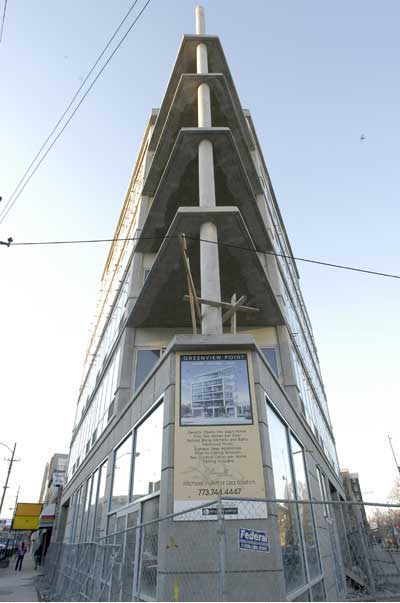 In the seven years that Caribou Coffee, at Broadway and Aldine, has been around, the customer base there has changed considerably as well, says Antwan Smith, an employee.
In the seven years that Caribou Coffee, at Broadway and Aldine, has been around, the customer base there has changed considerably as well, says Antwan Smith, an employee.
“There are a lot of mothers with strollers here, especially in the morning hours,” Smith says. “This neighborhood has changed a lot.”
Smith, who used to live in Lakeview East, has since moved to Uptown, where he says the rents are a little more affordable.
The Chicago Area Gay & Lesbian Chamber of Commerce recently moved north from Lakeview East as well. “We were in Lakeview East, but it was getting too expensive for us there,” says volunteer coordinator Julie Gomez. “We just couldn’t afford it anymore, so we moved to Andersonville.”
So far, there seems to be little chance that the gay bar district on Halsted will move north, but the changing face of Lakeview East gives some people pause. “We lost a popular gay dance bar to the Dakota (a 56-unit condo development on Halsted),” Barlow says. “Eventually, the bars on Halsted Street will be at risk.”
Challenges ahead
Ludwig doesn’t subscribe to the idea that Lakeview East is any less gay, but he’ll be the first to tell you that it’s much more affluent.
“Our challenge here is to stay conscious of the fact that we are in the middle of a very upscale residential area,” Ludwig says. “We want to be sensitive to that fact. On the other hand, we don’t want to get too boring.”
Many people might argue that the biggest challenge in Lakeview East is not so much changing demographics and rising real estate prices, but the congestion that comes along with them. “Car ownership in Lakeview East has doubled in the last 10 years,” Tunney says. “I guess people want to have it all.”
In an effort to bring some much-needed green space to Lakeview East, Ludwig has been actively seeking contributions from private investors to create a neighborhood park. He has a site in mind: two adjacent lots at 815 and 817 W. Roscoe. “Right now, there’s no park within our neighborhood boundary,” Ludwig says. “But if we don’t come up with the money to buy these lots, the owner will sell them to a developer, who will probably build an eight-flat there.”
Despite the congestion, buyers have been flocking to Lakeview East in droves. And gay or straight, married or single, they all seem to be attracted to the same thing: accessibility to the lake. “The Lakeview area is very appealing to the active person,” says Weinberg. “There’s the bike path, the running path, beach volleyball, the driving range, and of course, nightlife, restaurants and retail all within walking distance.”
Reinventing Lakeview East
The gay community in Lakeview East may be spreading out, but at least one major gay and lesbian organization is moving in. Horizons Community Services, currently located in Lincoln Park, is building its $20 million Center on Halsted in Lakeview East. The work-in-progress, at Halsted and Waveland, will feature meeting spaces for community organizations, a gym, a theater and a Whole Foods Market on the ground floor when it opens in 2006.
While it might seem curious that the organization would choose to move in just when many of its clients have been moving out, that’s not the way the groups sees its plan.
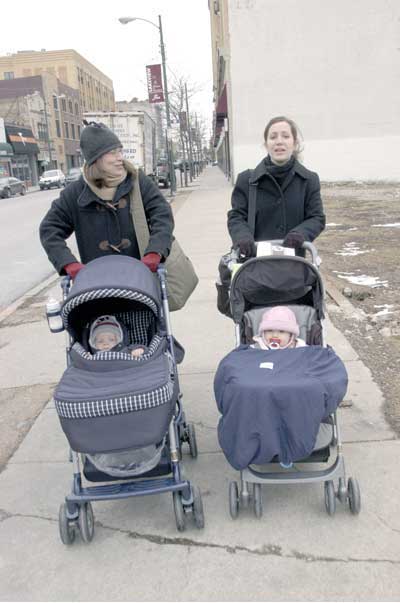 “With the mayor’s commitment to recognizing the gay and lesbian community here (with the streetscape program), it makes sense for us to be in Lakeview East,” says Modesto Tico Valle, acting executive director for Center on Halsted. “Besides,” Valle says, “the decision was made for us, because the mayor selected the site. Originally we were looking at another location farther north, where a lot of the gay community has been moving to.”
“With the mayor’s commitment to recognizing the gay and lesbian community here (with the streetscape program), it makes sense for us to be in Lakeview East,” says Modesto Tico Valle, acting executive director for Center on Halsted. “Besides,” Valle says, “the decision was made for us, because the mayor selected the site. Originally we were looking at another location farther north, where a lot of the gay community has been moving to.”
Known for its youth outreach program, the organization is hoping that young gay teens will continue to commute to Lakeview to utilize their services. “Right now, we see about 100 youth a week from as far south as 75th Street and as far north as Highland Park,” Valle says. “I don’t think that’s going to change.”
Many people see Lakeview East eventually morphing into a version of New York City’s Greenwich Village, a neighborhood that continues to serve a vital purpose for the gay community there, even though its residents are no longer predominantly gay.
“Lakeview East is what I would call gay-fabulous,” J.P. says. “It’s a place where people can be fabulously gay and feel comfortable in their element, no matter where they live.”
